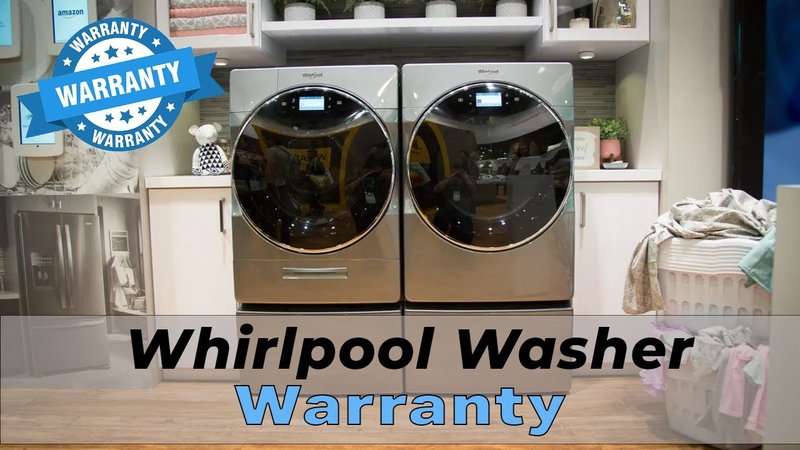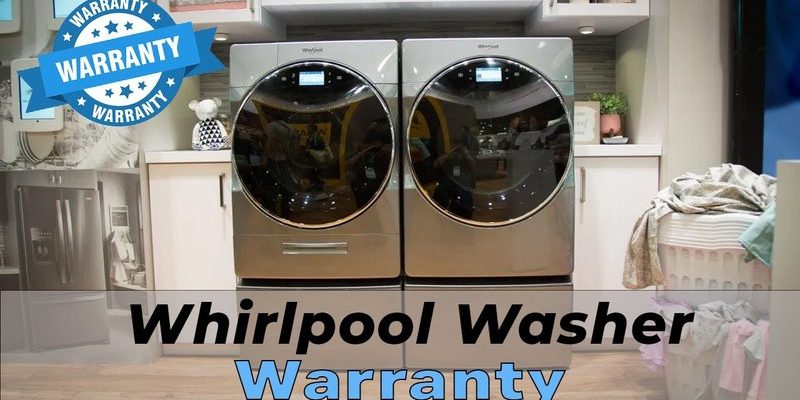
Think of your Whirlpool laundry appliance warranty as a safety net — it’s there to catch you when your washer or dryer misbehaves. But here’s the catch: one wrong move, like a tiny misstep or an “innocent” DIY tweak, can tear that net and leave you hanging. Honestly, it’s like owning a car and deciding to tinker under the hood without checking if it voids your insurance. You want to keep that warranty intact because, when something goes wrong, it saves you from unexpected repair bills and headaches.
Let me explain how you can avoid accidentally voiding your Whirlpool laundry appliance warranty. It’s less about complex legalese and more about understanding simple do’s and don’ts — the kind of things that might seem harmless but can cost you dearly. So, grab your coffee, and let’s walk through what really matters when it comes to protecting your warranty while keeping your washer or dryer running smoothly.
Understand What Your Whirlpool Warranty Covers and Doesn’t
Here’s the thing: every Whirlpool laundry appliance warranty spells out exactly what’s covered—and just as importantly, what’s not. Usually, the warranty covers defects in materials or workmanship for a set period, often one year for parts and labor. But wear and tear, accidental damage, or misuse usually don’t make the cut.
Imagine buying a brand-new phone but then dropping it repeatedly and expecting the warranty to cover the screen. It doesn’t work that way, right? Your Whirlpool warranty works similarly. If you use your washer or dryer normally but it breaks down due to genuine faults, you’re golden. But if the damage results from misuse, the warranty can be voided.
So, reading your warranty details carefully is key. Whirlpool typically explains the scope clearly, often including instructions on proper installation and maintenance. Skipping this step is like signing up for a marathon without knowing the route — you might trip over unforeseen hurdles.
Install Your Appliance Exactly as Recommended
You might be thinking, “How hard can installation be?” But here’s the deal—improper installation is one of the fastest ways to void your Whirlpool warranty. Whirlpool sets strict guidelines because appliances need to be level, connected to the right type of power source, and properly vented for dryers.
If your washer sits unevenly, it can cause excessive vibration, leading to premature wear and tear. The warranty won’t cover damage caused by improper installation. Similarly, dryer vents have to be installed with correct duct size and materials to prevent fire hazards. Whirlpool won’t fix damage caused by someone ignoring these rules.
For example, a friend once tried to install their dryer without proper venting, assuming it wasn’t a big deal. Long story short, the appliance overheated, the warranty was denied, and the repair cost was steep. Honestly, when you think about it, investing a little time or getting a pro to install your Whirlpool laundry appliance properly is worth every penny.
Avoid Unauthorized Repairs or Modifications
Here’s where things get tricky: it’s tempting to fix a minor issue yourself or with a neighborhood handyman. But Whirlpool’s warranty generally requires that repairs be done by authorized service technicians using genuine parts. If you try to swap parts, reset internal codes, or tweak settings on your own, you might be waving goodbye to your warranty.
Think of your appliance like a delicate clock. You can’t just open it up and start swapping gears without knowing exactly what you’re doing. Whirlpool’s electronics and control boards are complex, and messing with them can cause big problems. If an unauthorized repair causes damage, the warranty almost always becomes void.
If you notice an issue—say, your washer isn’t spinning properly or the dryer won’t heat—your best move is to contact Whirlpool customer service or a certified repair technician. They’ll handle the troubleshooting and repairs without risking your warranty.
Keep Up With Regular Maintenance and Care
You might think a warranty will cover everything, no matter how you treat your appliance. But here’s the thing: Whirlpool warranties generally exclude damage resulting from neglect or improper maintenance. That means if your washer or dryer breaks down because you never cleaned the lint trap or ignored buildup in hoses, you could be out of luck.
Regular upkeep is surprisingly easy and really important. For example, cleaning your dryer’s lint trap after every load and inspecting the vent at least once a year helps prevent fire risks and keeps your machine working efficiently. Whirlpool also recommends checking hoses for cracks or leaks and replacing them every few years.
Honestly, thinking of regular maintenance as part of your warranty insurance makes it easier. It’s not just about avoiding voids—it’s about extending the life of your appliance. Plus, it saves you from expensive repairs down the line.
Use the Correct Power Source and Avoid Electrical Mishaps
One of the sneaky ways to void your Whirlpool warranty is by plugging the appliance into the wrong power source. Many washers and dryers require specific voltage and amperage levels. Using the wrong outlet or an extension cord can damage the appliance’s electronics or motor.
Imagine your appliance like a high-performance sports car; it needs premium fuel (in this case, correct electrical supply) to perform its best. Feeding it the wrong kind of power can fry circuits or wear down components quickly, and Whirlpool will definitely frown upon that when assessing warranty claims.
Also, power surges can harm your laundry appliances. Consider investing in a surge protector designed for large appliances, or talk to an electrician to safeguard your home’s electrical system. It’s a small step that can prevent big warranty headaches later.
Handle Error Codes and Resets Properly
You might see error codes flashing on your Whirlpool washer or dryer and want to fix them on the spot by resetting the machine or fiddling with settings. While some resets are harmless and even recommended, improper attempts to “hack” or bypass error codes can void your warranty.
Whirlpool’s manuals often include basic troubleshooting steps, like unplugging the appliance for a few minutes or pressing certain buttons to perform a reset. That’s completely fine. But if you start opening panels to manually override controls or try non-certified software patches, that’s a different story.
Here’s a quick example: the F1 error code in many Whirlpool washers signals a problem with the motor. If you reset and the error persists, forcing the machine to run can cause further damage. It’s best to call an authorized technician who can run diagnostics and perform repairs without risking warranty coverage.
Keep Your Purchase and Warranty Documents Safe
This might sound obvious, but many people lose their warranty coverage just because they can’t prove they own the appliance or when they bought it. Stashing your Whirlpool purchase receipt, warranty card, and any related documents in a safe spot is vital.
When you reach out for warranty service, you’ll likely need to provide proof of purchase and warranty status. Without those, Whirlpool might treat your claim as out of warranty or deny service altogether.
One easy habit is to take photos or scan your receipts and warranty papers right after you buy the appliance. Store them digitally along with your appliance manuals and service records. That way, if something goes wrong years later, you’re ready with all the paperwork.
Avoid Using Non-Whirlpool or Third-Party Replacement Parts
It’s tempting to save a few bucks by buying third-party or generic replacement parts for your Whirlpool laundry appliance. But here’s the truth: using non-Whirlpool parts can void your warranty faster than you can say “broken machine.”
Whirlpool parts are designed specifically for the make and model of your appliance. Third-party parts might not fit properly or meet the same quality standards, potentially causing damage or poor performance down the line. If an issue results from an unofficial part, Whirlpool’s warranty usually won’t cover repairs.
So, when you need replacement components—whether it’s a new belt, sensor, or control board—it’s safest to stick with genuine Whirlpool parts. It might cost more upfront, but it keeps your warranty intact and your washer or dryer running as intended.
Wrapping It Up: Play It Safe to Protect Your Whirlpool Warranty
Honestly, protecting your Whirlpool laundry appliance warranty isn’t about following a bunch of boring rules. It’s more like respecting the machine and working with it, not against it. From proper installation to authorized repairs, regular maintenance, and using the right parts, each step helps keep your warranty—and your sanity—intact.
So next time you notice a glitch or think about fixing your washer or dryer yourself, remember these tips. Your warranty is like a trust agreement between you and Whirlpool: take care of the machine as advised, and they’ll have your back when genuine problems arise. A little patience and care go a long way toward avoiding warranty voids and ensuring your laundry days stay hassle-free.
